#luigi segre
Explore tagged Tumblr posts
Text
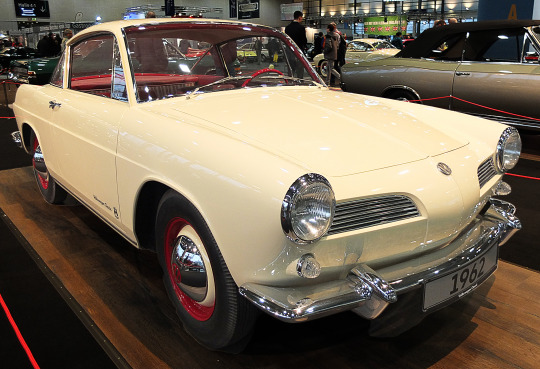
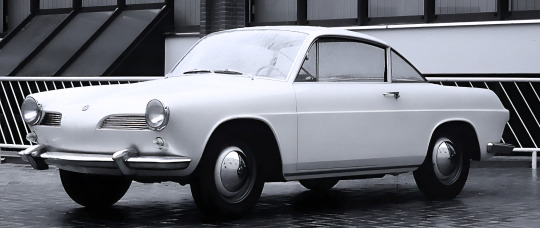

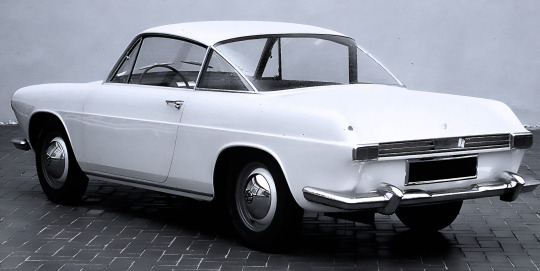
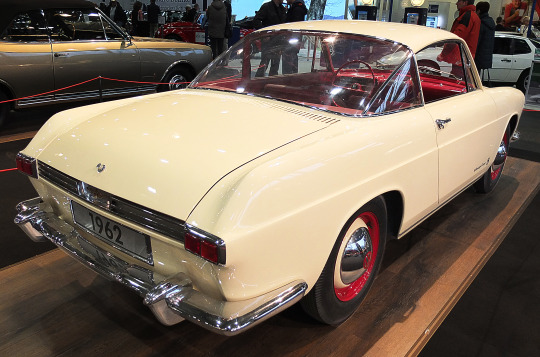
Volkswagen Karmann Ghia Coupé Studie, 1962. Designed by Luigi Segre, responsible for styling the original Type 14 Karmann Ghia, who had been commissioned by Wilhelm Karmann Jnr to update his design. However the 7-year-old Type 14 continued to sell well and VW also had the new Type 34 Karmann Ghia up-market from the Type 14 so felt the update was unnecessary.
show photographs by Hog Troglodyte on Flickr
#Volkswagen#Volkswagen Karmann Ghia#Ghia#design study#1962#prototype#Volkswagen Karmann Ghia Type 14#Type 14#1960s#rear engine#air cooled#boxer engine#Luigi Segre
176 notes
·
View notes
Text

Les Pères de la Karmann Ghia : le designer Wilhelm Karmann (à gauche) et le designer Luigi Segre. - source Cars & Motorbikes Stars of the Golden era.
43 notes
·
View notes
Video
youtube
LA GRANDE GUERRA (1959) - Trailer | Filmauro
LA GRANDE GUERRA - 15- 18
AGE E SCARPELLI - SCENEGGIATORI
Figlio di Poseidone e di Libia e fratello di Belo[2][3], sposò Telefassa[2] (che Igino chiama Argiope[4]) che lo rese padre di Cadmo, Cilice, Fenice ed una sola figlia, Europa[2]. Tra i figli, Pausania aggiunge Taso[5].
Mitologia Sua figlia Europa era bellissima, Zeus volle possederla e per questo si celò sotto le sembianze di un toro e la rapì.
Agenore inviò i suoi figli nella sua ricerca[2][5] dicendogli di non tornare senza di lei. Nel corso delle loro peregrinazioni, questi figli fondarono città ovunque e così Fenice divenne il capostipite dei fenici, Cilice quello dei cilici, Cadmo si stabilì in Beozia costruendo Cadmea, la rocca di Tebe. Nessuno di loro però trovò Europa[2].
La stirpe
La grande guerra è una commedia drammatica del 1959 diretta da Mario Monicelli, prodotta da Dino De Laurentiis e interpretata da Alberto Sordi e Vittorio Gassman.
Mario Monicelli, Age & Scarpelli, Luciano Vincenzoni Produttore Dino De Laurentiis Fotografia Leonida Barboni, Roberto Gerardi, Giuseppe Rotunno, Giuseppe Serrandi Montaggio Adriana Novelli Effetti speciali Gatti, Serse Urbisaglia Musiche Nino Rota Scenografia Mario Garbuglia Costumi Danilo Donati Trucco Romolo De Martino, Rino Carboni Interpreti e personaggi Alberto Sordi: Oreste Jacovacci Vittorio Gassman: Giovanni Busacca Silvana Mangano: Costantina Romolo Valli: tenente Gallina Folco Lulli: Giuseppe Bordin Bernard Blier: capitano Castelli Vittorio Sanipoli: maggiore Segre Nicola Arigliano: Giardino Geronimo Meynier: portaordini Mario Valdemarin: sottotenente Loquenzi Elsa Vazzoler: moglie di Bordin Tiberio Murgia: Rosario Nicotra Livio Lorenzon: sergente Battiferri Ferruccio Amendola: De Concini Gianni Baghino: un soldato Carlo D'Angelo: capitano Ferri Achille Compagnoni: cappellano Luigi Fainelli: Giacomazzi Marcello Giorda: il generale Tiberio Mitri: Mandich Gérard Herter: capitano austriaco Guido Celano: maggiore italiano Leandro Punturi: bambino Mario Feliciani Mario Mazza Mario Colli Mario Frera Gian Luigi Polidoro: attendente del capitano austriaco Edda Ferronao Doppiatori originali Nino Dal Fabbro: capitano Castelli Mario Colli: cappellano Turi Ferro: Rosario Nicotra Riccardo Cucciolla: Giardino Gastone Moschin: sergente Battiferri
❤️❤️❤️❤️❤️❤️❤️❤️❤️❤️❤️❤️❤️❤️❤️❤️❤️❤️❤️❤️ ❤️❤️
#gustavopetro #colombia #DONALDTRUMP #TRUMP #BOLSONARO #DORIGHEZZI #STRISCIALANOTIZIA #FRANCESCO #RUTELLI #PROPAGANDALIVE #ELUANA #ENGLARO #ELUANAENGLARO #CRISTIANODEANDRE #twitter #facebook #skyrock #linkedin #instagram #okru #tiktok
0 notes
Photo

Volkswagen Karmann Ghia Type 14 (1972) – Carrozzeria Ghia: Luigi Segre and Felice Mario Boano and others; 1972 update by Sergio Sartorelli
My dream car. It was designed to be a sporty version of the Beetle. Production ran from 1955-1975.
Image source: Autoevolution
#car#classic car#classic cars#vintage#vintage car#mid century#mid centruy modern#vintage cars#volkswagen#vw#beetle#industrial design#design#car design#70s aesthetic#70s car#70s#karmannghia
13 notes
·
View notes
Link
January 24, 2020 - Anti-Semitic writing was scrawled overnight on the door of a now-deceased member of the Italian anti-Fascist resistance who survived a Nazi concentration camp, a family friend and historian wrote Friday on Facebook.
‘’Juden Hier,’’ German for ‘’Jews Here,’’ with a Star of David was written in black paint on the door of the house in the Piedmont town of Mondovi, where Lidia Beccaria Rolfi lived until her death in 1996.
Her son Aldo Rolfi, who lives there now, reported the offensive graffiti to police, the news agency LaPresse reported.
University of Turin historian Bruno Maida noted on Facebook that the writing appeared after a local newspaper printed an article by Aldo Rolfi remembering his mother. It was titled: ‘’The memory grows, but also anti-Semitism: The words of Lidia Rolfi anticipated today’s themes.’’
‘’Beyond the patent ignorance, Lidia was deported to Ravensbrueck for political reasons, this is one of the many signs that should make us raise our voices to remind everyone that to be anti-fascist is the first duty to memory that we have,’’ Maida wrote.
Beccaria Rolfi, who was born April 8, 1925 into a rural farm family in the northern Piedmont region, joined the anti-Nazi-Fascist resistance in December 1943, and was arrested four months later. She was turned over to the Gestapo and deported on June 27, 1944 to Ravensbrueck, a concentration camp for women in northern Germany. She was liberated in May 1945.
She wrote about the horrors of her time in the concentration camp in the 1978 book “’The Women of Ravensbrueck,’’ which was translated into German and Spanish.
Also Friday, the daily newspaper Corriere della Sera reported that a swastika had been painted on the side of the basilica in the southern city of Andria, in Puglia. The newspaper printed a night photo of the swastika, which has since been removed. Bishop Luigi Mansi was quoted as saying that the appearance of the Nazi symbol ‘’is worrying'' and called on people to ‘’open our eyes before it is too late. History teaches. We hope that those who did this will be made an example of.''
Observers have noted a growing boldness in anti-Semitic and racist attitudes in Italy, which has included on-line attacks against an 89-year-old Auschwitz survivor and senator-for-life, Liliana Segre, who has been given a police escort. Segre has said she will suspend schools visits to discuss her experiences under the Nazi-Fascist dictatorships in April, citing age, LaPresse reported.
35 notes
·
View notes
Text
Qualcuno si è dimenticato di lui: è ora di rileggere Luigi Meneghello e il suo capolavoro, “Libera nos a Malo”
“Pater noster qui es in caelis/ santificetur nomen tuum/ adveniat regnum tuum/ fiat voluntas tua/ sicut in caelo et in terra/ panem nostrum quotidianum da nobis hodie/ et dimitte nobis debita nostra/ sicut et nos dimittimus debitoribus nostris/ et ne nos inducas in tentationem/ sed libera nos a malo”.
*
Lì dove finisce la preghiera in latino inizia la storia. L’invito non è sfuggito all’acume veneto-british-veneto di Luigi Meneghello, nato in provincia di Vicenza e poi professore all’Università di Reading . Colpevolmente l’intellighenzia italiana e la sua cricca di critici si è dimenticata di lui. Molto colpevolmente: se non fosse stato per l’illuminato Daniele Luchetti, il regista che nel 1998 ha girato I piccoli maestri, se non fosse stato per due attori veneti eccezionali, Natalino Balasso e Marco Paolini, e un altrettanto illuminato regista piemontese, Gabriele Vacis che insieme – era il 2005 – hanno portato in tournée teatrale Libera nos, spettacolo creato dai testi di Meneghello, il velo dell’oblio sarebbe calato (ancora colpevolmente) sulla sua scrittura terrigna e dialettale, sulla sua capacità straordinaria di raccontare un paesino de màgnagàti, aggrappato inconsapevolmente alla coda del Pater noster.
*
L’invocazione del Pater noster viene ovviamente travisata dai compaesani in una più goliardica “Libera nos amaluàmen”. Sembra di sentirli recitare assieme, tra un bianchèto e una graspèta, come una formula quasi magica, uno scongiuro contro le brutture e gli orrori della vita: di più, contro l’incombenza della morte, non solo o non tanto fisica quanto morale. “Liberaci dal luàme, dalle perigliose cadute nei luamàri, così frequenti per i tuoi figlioli, e così spiacevoli: liberaci da ciò che il luàme significa, i negri spruzzi della morte, la bocca del leone, il profondo lago! Liberaci dalla morte ingrata: del gatto nel sacco che l’uomo sbatte a due mani sul muro; del cane in Piazzola a cui la sfera d’acciaio arroventata fuoriesce fumando dal sottopancia; del maiale svenato che urla in cima al cortile; del coniglio muto, del topo di chiavica che stride tra il muro e il portone nel feroce trambusto dei rastrellatori. Libera Signore i tuoi figli da questo luàme, dalla sudicia porta dell’Inferno”.
*
“Le cose andavano così: c’era il mondo della lingua, delle convenzioni, degli Arditi, delle Creole, di Perbenito Mosulini, dei Vibralani; e c’era il mondo del dialetto, quello della realtà pratica, dei bisogni fisiologici, delle cose grossolane”.
*
Libera nos a Malo apparve in un momento letterario che non poteva non provocare equivoci poiché da pochi anni erano usciti i romanzi di Pasolini I ragazzi di vita (1955) e Una vita violenta (1959), quest’ultimo contemporaneo al Calzolaio di Vigevano di Mastronardi, secondo Segre “esperimenti in cui il dialetto aveva un ruolo centrale ma funzioni molto diverse, tra realismo espressionistico e mimesi appassionata del parlato, tra critica della società e deformazione fantastica”.
*
Libera nos a Malo è stato pubblicato nel 1963. Il titolo è un gioco di parole tra l’espressione evangelica “liberaci dal male” e il suo paese natale, Malo. Meneghello qui propone, in una sorta di rivisitazione autobiografica, gli usi, i costumi, le figure tipiche, la vita sociale che ha conosciuto nel corso della sua infanzia e giovinezza e traccia un ritratto della provincia vicentina, della sua gente e della sua cultura dagli anni Trenta agli anni Sessanta. Dunque un passato incavicchiato nel presente, raccontato in un’opera che è un libro della memoria e insieme un libro della realtà.
*
Il fil rouge della vicenda è la vita dell’autore, in particolare la sua infanzia. Fanno da sfondo il Fascismo, la vita della famiglia, l’istruzione, la religione cattolica. Gli stessi elementi che emergono nella pellicola Amarcord di Federico Fellini, a pensarci bene.
*
“Il primo nucleo del libro si è formato a Malo nel corso di due estati (le mie vacanze accademiche che passavamo appunto al mio paese, nella casa di mio padre). Tre mesi circa nel 1960 e altri tre nel 1961. Mi ero messo a scrivere su certi fogli sciolti, alla sera quando si tornava dal caffè, le conversazioni e le chiacchiere che avevamo fatto con gli amici, o anche le cose sentite in paese durante il giorno. Uno, due, tre fogli per sera, in tutto saranno stati un centinaio. Non avevo intenti esplicitamente letterari. Volevo fermare qualcosa che mi era piaciuto, fatti o discorsi, per lo più cose senza importanza. Qualche scossa di terremoto durante la notte, e la gente raccontava le sue impressioni: l’Annamaria aveva immaginato, per un attimo, che ci fosse un toro (Annamaria! un toro?) sotto il letto… Mio papa si era svegliato, e aveva pensato: ‘Orcocàn, tenporale n’altra volta’… Ho scritto questi fogli in due serie nelle due estati che ho detto. Nell’intervallo, in Inghilterra o altrove, ogni tanto mi veniva in mente uno spunto e aggiungevo qualche altra cosetta dello stesso tipo. È stato soltanto nell’autunno del 1961, tornando in Inghilterra per l’inizio dell’anno accademico che mi è venuta l’idea di utilizzare questo materiale: sentivo (credo per la prima volta in vita mia, e non senza sorpresa, essendo io abituato a scrivere cose che poi non mi piacciono), sentivo che quegli appunti mi piacevano, non nel senso che li credessi molto belli, ma nel senso che corrispondevano a ciò che c’era davvero dentro di me, io ero così, non qualcos’altro”. Luigi Meneghello.
*
Meneghello è uno scrittore veneto quanto Verga uno scrittore siciliano e Dante uno scrittore fiorentino. La sua terra – e il cielo e tutto lo spazio di confusione e ispirazione e disperazione tra questo e quella – è l’invenzione del linguaggio. C’è una ricercatezza formale e musicale dissimulata nell’ambientazione più modesta possibile, c’è la costruzione di una lingua non nuova ma rinnovata, riscaldata, rampicante, potentissima.
*
“Attraverso il microcosmo di Malo viene fissata e trasmessa compiutamente al futuro la vicenda di tutta la nostra società, nel breve periodo in cui passa da una statica e secolare civiltà contadina alle forme più avanzate della modernità, la vicenda addirittura di tutto il nostro mondo con le fratture che hanno segnato la sua precipitosa evoluzione”. Lo ha scritto Giulio Lepschy.
*
Un libro fondamentale della cultura paesana e della lingua della prima metà del Novecento: unisce umorismo leggero a sensibilità e cultura linguistica. Spassoso, certo, ma anche dissacrante e tenero. Il dialetto diventa così l’ultimo veicolo identitario e riporta il lettore in un Veneto che in parte esiste ancora, soprattutto nei paesini di provincia, e che continua a vivere grazie anche alla sua lingua.
*
Libera nos a Malo è una “cronaca del ritorno” di Meneghello nel paese (e nella comunità) di Malo. All’incipit – “Si comincia con un temporale. Siamo arrivati ieri sera e ci hanno messi a dormire come sempre nella camera grande” – corrisponde simmetricamente una didascalia finale, “Abbiamo riso a lungo imbarazzati, e poi siamo andati via. Volta la carta la ze finia”.
*
“Il motivo della liberazione, di quel ‘libera nos’ da parte mia non corrisponde affatto a un desiderio di evadere dal paese, di essere liberato: non ne ho mai sentito il bisogno o la voglia, se non in un senso molto largo, che riguarda specialmente il paese, […] il doppio aspetto della mia relazione di fondo con Malo: da un lato essere (e sentirsi) all’interno della materia e parlare con l’autorità di chi vede le cose dall’interno; dall’altro la condizione opposta, il distacco senza del quale non c’è prospettiva in ciò che sai e che dici. Sono due aspetti ugualmente essenziali”.
Alessandro Carli
L'articolo Qualcuno si è dimenticato di lui: è ora di rileggere Luigi Meneghello e il suo capolavoro, “Libera nos a Malo” proviene da Pangea.
from pangea.news https://ift.tt/2LmRgm5
12 notes
·
View notes
Text
W połowie lat 50-tych Volkswagen wprowadził do produkcji zupełnie nowe nowe sportowe coupe – Volkswagen Karmann Ghia. Chociaż pod względem parametrów auto nie przypominało ówczesnych samochodów sportowych, zbudowano około 500 000 egzemplarzy tego modelu.
Na początku lat 50-tych w RFN podstawowym samochodem był Volkswagen Typ 1, czyli Garbus. O ile było to bardzo udane auto, pod względem osiągów wypadało blado. W związku z tym Volkswagen postanowił poszerzyć ofertę o nowy, typowo sportowy samochód, zbudowany na bazie Garbusa.
Volkswagen Karmann Ghia
W październiku 1953 roku na Motor Show w Paryżu zaprezentowano prototyp nowego samochodu, który otrzymał nazwę Volkswagen Typ 14 Karmann Ghia. Sportowe coupe wyróżniało się stylistyką nadwozia, której autorem był Luigi Segre z włoskiej firmy Ghia, a wykonawcą niemiecka firma Karmann. Samochód zdobył duże zainteresowanie, w związku z czym Volkswagen szybko rozpoczął przygotowania do produkcji seryjnej.
Volkswagen Karmann Ghia
Pierwszy seryjny Karmann Ghia pojawił się w sierpniu 1955 roku. Samochód miał 4,14 m długości i masę zaledwie 820 kg. Pięknie zaprojektowane nadwozie o wyraźnie sportowej stylistyce skrywało pod maską niewielki czterocylindrowy silnik o pojemności 1,2 litra i mocy 34 KM. Zapewniał ona zawrotną prędkości… 120 km/h i przyśpieszenie od 0-100 km/h w 28,8 sekund. Mimo sportowego wyglądu, osiągi były więc raczej zwyczajne – Chevrolet Corvette z 1953 roku miał sześciocylindrowy silnik o mocy 150 KM zapewniający prędkość maksymalną 165 km/h.
Volkswagen Karmann Ghia (fot. Michał Banach)
Początkowo samochód produkowano tylko w wersjiz silnikiem 1,2-litrowym z nadwoziem coupe (w praktyce 2+2, przy czym na tylnej kanapie było bardzo mało miejsca). W sierpniu 1957 roku ofertę poszerzono o kabriolet, a w 1965 roku dodano nowy silnik o pojemności 1,3 litra a w 1970 roku silnik o pojemności 1,6 litra.
Mimo wysokiej ceny (2400 dolarów w 1956 roku – współcześnie około 20 900 dolarów), Volkswagen Karmann Ghia bardzo szybko zyskał popularność. Produkowano go w Niemczech do 1974 roku w praktycznie niezmienionej formie. Łącznie powstało 364 407 egzemplarzy coupe i 80 837 kabrioletów. Dodatkowo 41 689 egzemplarzy zbudowano na licencji w Brazylii w latach 1962-1975 (wersje coupe, kabriolet i TC).
Volkswagen Karmann Ghia (fot. Michał Banach)
We wrześniu 1961 roku do sprzedaży wszedł zmodyfikowany wariant Volkswagena Karmann Ghia, oparty na podwoziu Volkswagena Typ 3 i nazwany Typ 34 Karmann Ghia. Samochód różnił się od swojego poprzednika inną stylistyką nadwozia (znacznie brzydszą), stworzoną przez firmę Ghia oraz lepszymi osiągami. Pod maską znalazł się mocniejszy, czterocylindrowy silnik o pojemności 1,5 litra i mocy 45 KM, zapewniający prędkość maksymalną około 144 km/h. Zbudowano tylko 42 563 egzemplarze tego modelu.
Volkswagen Karmann Ghia (fot. Michał Banach)
W Brazylii do sprzedaży wprowadzono jeszcze model Volkswagen Karmann Ghia TC, również oparty na podwoziu Typu 3. Pod maską umieszczono czterocylindrowy silnik o pojemności 1,6 litra i mocy 65 KM zapewniający prędkość maksymalną około 138 km/h. Największą wadą samochodu było nadwozie, które kompletnie nie miało stylu. Powstało 18 119 egzemplarzy tego modelu.
Współcześnie Volkswagen Karmann Ghia jest popularnym samochodem kolekcjonerskim, a jego ceny wahają się koło 60-70 tyś. zł.
#gallery-0-4 { margin: auto; } #gallery-0-4 .gallery-item { float: left; margin-top: 10px; text-align: center; width: 100%; } #gallery-0-4 img { border: 2px solid #cfcfcf; } #gallery-0-4 .gallery-caption { margin-left: 0; } /* see gallery_shortcode() in wp-includes/media.php */
Volkswagen Karmann Ghia
Volkswagen Karmann Ghia (fot. Michał Banach)
Volkswagen Karmann Ghia (fot. Michał Banach)
Volkswagen Typ 34 Karmann Ghia
Volkswagen Karmann Ghia TC
Volkswagen Karmann Ghia – niesportowy samochód sportowy W połowie lat 50-tych Volkswagen wprowadził do produkcji zupełnie nowe nowe sportowe coupe - Volkswagen Karmann Ghia.
#1953#1955#Beetle#Brazylia#Coupe#Garbus#Ghia#Karmann#Karmann Ghia#Luigi Segre#niemcy#samochód#sportowy#Typ 14#Typ 34#volkswagen#Volkswagen Karmann Ghia#Volkswagen Typ 1
0 notes
Photo
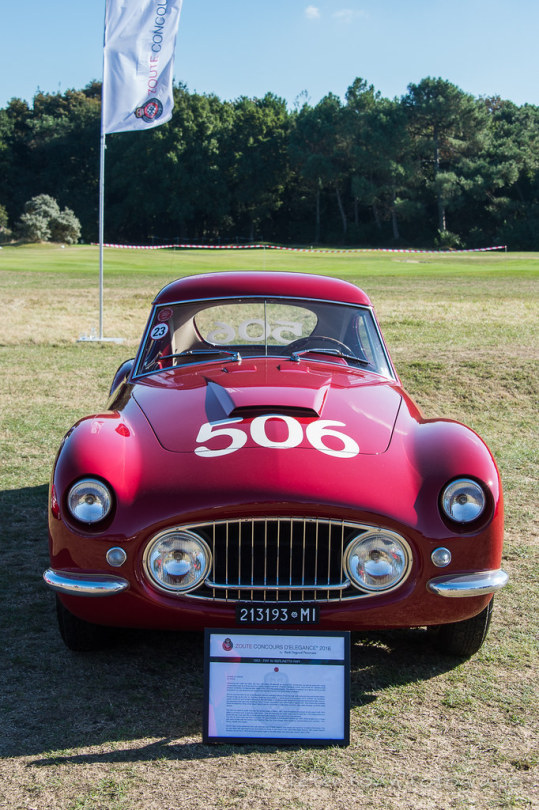
Fiat 8V Berlinetta Rapi - 1953 by Perico001 Ex-Works Coachwork by Rapi - Fiat Chassis no. 000032 Displacing just under two liters, the Tipo 104 motor V8 featured an unusual 70° architecture, as well as advanced racing components such as a finned aluminum sump, forged crankshaft, polished intakes and ports, and tubular 4x1 stainless steel exhaust manifolds. As Giacosa later noted of the V-8 in his autobiography, "the idea of mounting it on a sports car for a small production run was attractive and aroused the keenest interest among the design engineers." And so was born the Fiat 8V, which featured the only overhead-valve V-8 that Fiat ever built during its long and storied history. Known in Italy as the Otto Vu, the new model was positioned as a luxury grand touring sports car.To maintain the necessary quality-control for such a high-end product, the fabrication of the chassis was farmed out to Giorgio Ambrosini's Siata, the tuning specialists that had long served as Fiat's in-house competition and customization department. This choice was probably further facilitated by Ghia owner Mario Felice Boano's 1950 hiring of Luigi Segre, a former Siata sales manager, as Ghia's sales director. The Otto Vu made its public debut at the Geneva Salon in March 1952, and immediately impressed all who saw it with Fiat's ability to produce such a jewel-like automobile. Over the following two years, about two hundred tipo 104 motors were produced (though more than fifty of these were eventually installed in the upcoming Siata roadster). The Otto Vu automobile was even more rare, with approximately 114 examples built through 1954. While at least forty of these cars were bodied with the factory coachwork by Rapi, the other chassis were clothed by coachbuilders such as Balbo, Pinin Farina, Vignale and Zagato. The 8V Rapi Corsa presented here was delivered new in Milan where it was owned and raced by Scuderia Ambrosiana. The car was fitted with lightweight body and sliding windows, it was raced in the 1953 Mille Miglia finishing 18th overall. Sold to Vincenzo Aurricchio in 1954 and it participated again in the Mille Miglia that same year where it didn’t finish. Zoute Concours d'Elegance The Royal Zoute Golf Club Zoute Grand Prix 2016 Knokke - Belgium Oktober 2016 https://flic.kr/p/NhBLJk
1 note
·
View note
Photo

The 1956 New York auto show was arguably a watershed event for Swedish cars, since it marked the formal American debut of the Volvo 444 and the Saab 93B; but Volvo had already ramped up deliveries. There was also a #Volvo sports car on the stand that spring, with a very American connection. Inspired by the the Corvette and Kaiser-Darrin, Volvo's P1900 had heavy input from California’s Glasspar. - The P1900, just going on sale then after 2 years' development, unfortunately, proved a flexible flyer and Volvo engineers fretted openly about its lack of structural integrity. When Volvo chief Gunnar Engellau took delivery of one in April of ’57, he quickly cancelled the car. Even before that, Volvo engineer Helmer Petterson had met privately with Engellau to propose trying a new car based on the Amazon rather than continue with the 1900. Engellau agreed but had Petterson solicit designs from Italian Carrozzerias instead of styling the car internally. - Five proposals were done by the recently combined Ghia and Frua (Ghia bought Frua’s company in 1957, with Frua remaining as head of design for at time). One was from a very junior Ghia staffer - Pelle Petterson, son of Helmer. Petterson’s design blended elements of Frua’s ideas and Ghia’s “Supersonic” look to excellent effect, but was not credited for many years. Engellau was not happy when Ghia’s Luigi Segre told him about the designer. - The mechanical prototype, P956-X1, was ready the end of 1957 and the prototyping mostly done by the summer of ’58; but Volvo had little factory space, which meant farming out assembly to Karmann - a deal nixed by VW, and then Pressed Steel and Jensen in the U.K., dictating even more engineering changes and adding weight. The car went on sale in the summer of 1960, but deliveries took awhile. Volvo was not pleased with Jensen’s build quality and moved assembly to Lundby in 1963 (renaming it the 1800S); though Pressed Steel made the shells into 1969. - The 1800S became a beloved sports car, although it wasn’t until 1965 that Volvo began trying really improve its performance with more power, an optional a competition package and, later, bigger engines (1969) and fuel injection (1970). https://www.instagram.com/p/ByQWk_Yla5t/?igshid=4i2wy7hmcj5l
3 notes
·
View notes
Text
𝙄𝙡 𝙋𝙖𝙡𝙚𝙧𝙢𝙤 🦅 (1/2)
La temporada 2022-2023 ha sido enmarcada por el regreso del club siciliano a divisiones profesionales de Italia como la #SerieBKT. A continuación se relatarán los momentos trascendentales que se vivieron con los Rossineri.
Las Águilas de Corini tendrán en Mateju, Segre, Di Mariano y Matteo Brunori a los líderes necesarios para comenzar EL REGRESO e intentar igualar y/o superar lo hecho en su mejor época llegando a Europa y clasificando quinto lugar 🦅
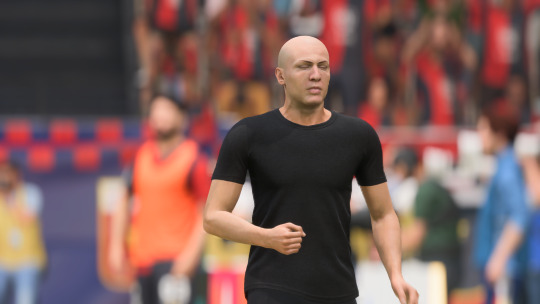
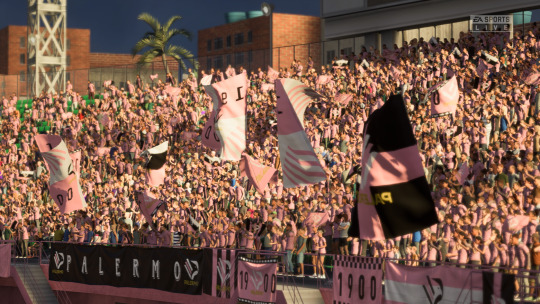

𝐿𝑜𝑠 𝐼𝑛𝑓𝑖𝑒𝑟𝑛𝑜𝑠 𝑑𝑒 𝑃𝑒𝑟𝑢𝑔𝑖𝑎
Este tipo de partidos suelen ser divididos, el equipo no andaba en su mejor forma luego de varias semanas sin triunfo ni gol pero una figura APARECIÓ y fue el Salvatore -Elia- del equipo con la primer goleada al dragón.

𝐷𝑒 𝑠𝑒𝑖𝑠 𝑝𝑢𝑛𝑡𝑜𝑠
Cuando se juegan playoffs se considera que varios serán candidatos al ascenso y, por ello, cuando se enfrentan dos involucrados en esa lucha los triunfos valen doble y aún más en calidad de visitante.
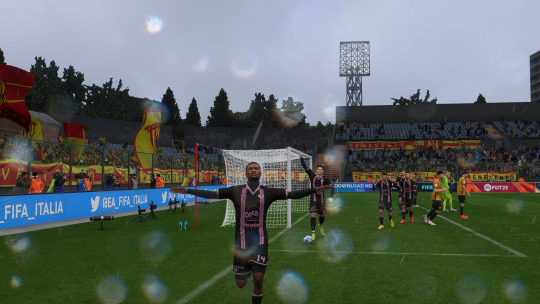
𝐿𝑜𝑠 𝑖𝑚𝑝𝑜𝑛𝑑𝑒𝑟𝑎𝑏𝑙𝑒𝑠 𝑑𝑒𝑙 𝑏𝑎𝑙𝑜𝑛
Poco le pasaba al encuentro en el Luigi Ferraris, todo se centraba en mediocampo, cuando de repente una disputa entre Mateo y el central rival terminó en una colisión de proporciones mortales. Juzgue usted mismo.
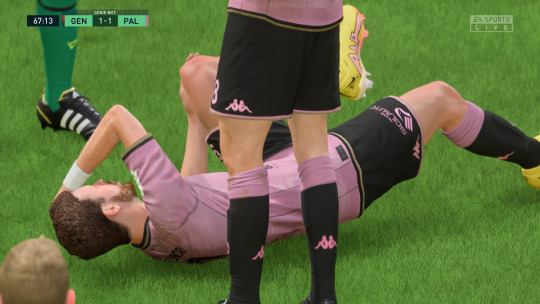
𝑀𝑎𝑙 𝑛𝑒𝑐𝑒𝑠𝑎𝑟𝑖𝑜
La #CoppaItalia es sumamente valorada que clubes como el Palermo deben aprovechar. Sin embargo, en un enfoque más realista la opción de 'hacerse a un lado' no suena mal SIEMPRE Y CUANDO al final logres competir por el ascenso que es prioritario.
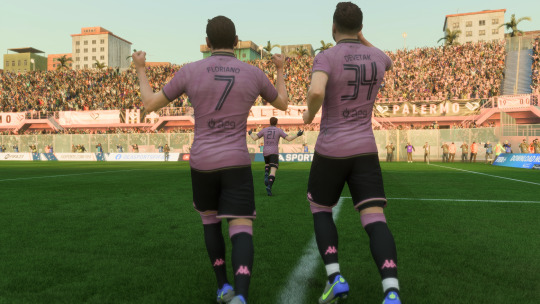
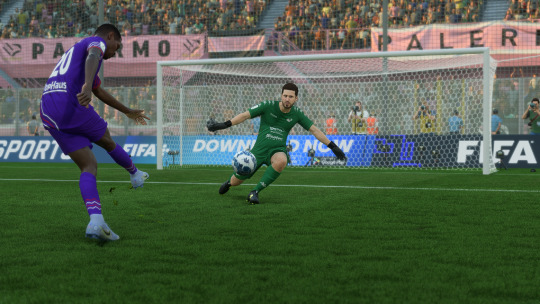
𝑅𝑜𝑚𝑝𝑒 𝑞𝑢𝑖𝑛𝑖𝑒𝑙𝑎𝑠
Visitar la cancha del líder parecía un gran reto para los Rossineri hasta que 'Mudo' Vázquez enloqueció, se fué expulsado y los parmesanos se quedaron con diez jugadores durante 65 minutos y los dirigidos de Corini no perdonaron con un 0-2 a la cuenta.
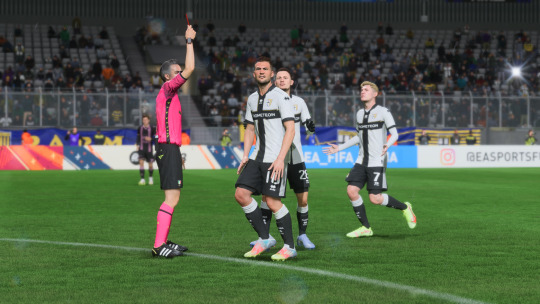
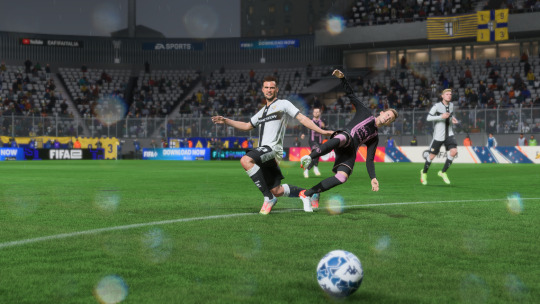
1 note
·
View note
Photo



Volkswagen Type 14 Prototype, 1953, by Ghia. The original Karmann Ghia concept was designed by Luigi Segre and built by Ghia though series production was taken over by coachbuilders Karmann who had been approached by VW to create a “halo” model based on the Beetle. The Karmann Ghia became the most popular imported car into the US for a time and remained in production until 1975
277 notes
·
View notes
Text
Fragile Italian government faces do-or-die votes in parliament
Prime Minister Giuseppe Conte faces two days of parliamentary votes that will decide if his fragile coalition can cling to power or has lost its majority, pushing Italy into deeper political turmoil.
Conte will address the lower house on Monday and the Senate on Tuesday about the future of his government after a junior partner quit the cabinet in a row over his handling of the twin coronavirus and economic crises.
Votes will be held in both chambers, with Conte struggling to fill the hole left by the defection of former premier Matteo Renzi and his small Italia Viva party.
Attention is especially focused on the 321-seat Senate, where Conte looks certain to fall short of an absolute majority after his efforts to persuade centrists in opposition ranks to rally to his side looked to have failed.
At least three of the upper house’s six life senators are expected to back the government, including 90-year-old Holocaust survivor Liliana Segre, but at present the most optimistic tally puts Conte on 157 votes, four short of an absolute majority.
However, Foreign Minister Luigi Di Maio, a leading light in the largest coalition party, the 5-Star Movement, has said even a relative majority would do.
“It is a majority. The absolute majority is only needed for (votes on) budget changes and very few other acts. And when we need it, we will find it,” he told Corriere della Sera daily.
A minority government will always find itself at the mercy of parliament, but Conte hopes that if he can overcome Tuesday’s threat, centrist parliamentarians will drift into his camp over time and bolster his position.
Conte is due to address the lower house at noon (1100 GMT) with a vote expected sometime after 6.30 p.m. (1730 GMT). He goes before the Senate at 9.30 a.m. (0830 GMT) on Tuesday, meaning the vote there is likely to be held in the afternoon.
Italia Viva has said it will return to the coalition if its policy demands are met. “Our problems can be sorted out in two hours,” party lawmaker Ettore Rosato told Sky Italia TV.
However, both 5-Star and its main coalition ally, the centre-left Democratic Party (PD), have said they want nothing more to do with Renzi, accusing him of betrayal.
There also seems little chance that 5-Star will accept a key Renzi demand – that Italy apply for a loan from the euro zone’s bailout fund, known as the European Stability Mechanism (ESM) – to help its health service deal with COVID-19.
The pandemic has killed 82,177 Italians, the second highest toll in Europe and sixth highest in the world.
“I will never vote for a government that considers itself the best in the world, that has seen 82,000 deaths and has not taken the ESM,” Renzi told state broadcaster RAI on Sunday.
Critics of the loan scheme say it could come with unwelcome conditions and note that no other EU state has tapped the fund.
http://interkomitet.com/press/international-news/fragile-italian-government-faces-do-or-die-votes-in-parliament/
0 notes
Photo

O.S.I. 20M TS The Officine Stampaggi Industriali (OSI) was a coachbuilding company founded in 1960 in Turin by former president of Ghia Luigi Segre and Arrigo Olivetti (from Fergat company). https://t.co/qd0EBcsrM7
6 notes
·
View notes
Text
Ces deux jolis prototypes à moteur arrière de 1962 sont étrangement similaires

Jason Torchinsky Hier 20 h 00 • p CAR DESIGN 4.7K 23 2 Le design automobile, comme toute mode, se décline en vagues de tendances, où certains looks et idées prennent de l'ampleur et se gonflent, se répandant partout, avant de finalement culminer, puis s'écraser. Vous vous attendez à ce que les voitures partagent certaines similitudes d'une époque donnée. Même dans cet esprit, les similitudes entre ces deux concepts de style de 1962 - l'un d'Allemagne via l'Italie, l'autre du Japon via, euh, également l'Italie - sont vraiment assez frappants et beaucoup plus similaires que ce à quoi vous vous attendiez. Je ne dis pas que quiconque a jeté un œil aux devoirs de quelqu'un d'autre ici, mais regardez-les. Ces étranges quasi-jumeaux sont la proposition de style Volkswagen Karman-Ghia de 1962 et le concept Hino Contessa 900 Sprint, également de 1962. Photo: Volkswagen AG Voyons d'abord la Volkswagen. Comme vous le savez probablement déjà, Karmann construisait la première voiture «sportive» de Volkswagen, la Karmann-Ghia, ainsi nommée parce qu'elle a été conçue par la maison de design italienne Ghia (il y a toute une histoire là-bas et Chrysler impliquée), et Karmann, qui avait construit la Ghia depuis 1955, a estimé qu'il était probablement temps pour une mise à jour. La direction de Karmann a amené le designer Luigi Segre à mettre à jour le design très rond, bulbeux des Ghia des années 1950 et à le traduire dans le vocabulaire de conception plus net, plus maigre et linéaire qui s'était développé à la fin des années 1950 et au début des années 1960. Le design résultant a réussi à intégrer habilement de nombreux éléments emblématiques du Karmann-Ghia, comme les entrées d'air frais de style chat-moustache sur la face avant, les proportions et la forme générales de la serre, mais maintenant tout est rendu plus serré et plus maigre, avec piliers élégamment minces et beaucoup de surface vitrée. Les entrées d'air primaires étaient juste en dessous de la lunette arrière, mais la sortie de l'air de refroidissement était située dans une zone semblable à une calandre entre les feux arrière, le seul véritable indice extérieur qu'un châssis VW à moteur arrière putters sous la peau. C'était vraiment un joli design, propre et moderne, tout en conservant suffisamment d'identité visuelle de la Ghia pour lui faire sentir partie de la famille. Volkswagen, cependant, répugnait à mettre à jour l'une de leurs voitures pour des raisons esthétiques uniquement, même si le scoutmaster de Dieu tenait un couteau à la gorge, refusait la mise à jour et conservait le design fondamentalement original de Ghia jusqu'en 1974. Pendant ce temps, au Japon, une autre entreprise construisait des voitures familiales à moteur arrière qui souhaitaient également utiliser leurs plates-formes pour des voitures sportives. Cette entreprise n'est pas du tout connue aujourd'hui, car elle a été englobée par Toyota en 1967, qui a mis fin à leurs voitures particulières et concentré l'entreprise sur les camions. Hino construisait des Renault sous licence, en particulier des Renault à moteur arrière comme la 4CV. En 1961, Hino avait adapté la plate-forme 4CV dans sa propre voiture, la Contessa, et en 1962, ils ont commencé à explorer les options pour un coupé sportif basé sur la Contessa. La Contessa 900 Sprint est cette voiture. Hino a demandé à la célèbre maison de design italienne Michelotti de concevoir le coupé, et le tuner italien Nardi a massé le moteur de 0,9 litre pour extraire un respectable pour cette taille et ce temps de 45 chevaux. Le design de la voiture était très à jour, souple et tendu, et avec une partie avant qui, je pense, ressemble assez remarquablement à l'étude de conception de VW Karmann-Ghia. Comme la Ghia, il y avait une paire de longues prises d'air qui rencontraient les gros phares ronds, flanquant un «nez» proéminent. Le «visage» du Hino était un peu plus court que le Ghia mais la similitude est évidente. Les proportions et les formes de serre sont très similaires, bien que le Hino ne dispose pas de la lunette arrière enveloppante de la Ghia et ajoute des prises d'air latérales d'aspect saisissant qui se terminent juste en avant de la roue arrière. L'arrière est de conception similaire au concept Karmann-Ghia, avec une grille d'échappement d'air entre les feux arrière, encore une fois, tout comme la VW. Le plan était de construire environ 1000 de ces charmants petits coupés, mais le design s'est avéré trop cher pour être produit efficacement, et seul celui a été construit, qui a été montré au Salon de l'auto de Tokyo en 1962 et 1963. Plus tard, il y avait une voiture sportive Contessa conçue par Michelotti, le coupé Contessa 1300, mais elle avait un design très différent, mais toujours très beau. J'admets, je ne suis pas tout à fait sûr de ce que je veux que les plats à emporter ici soient - je ne pense pas qu'il y ait eu de crèche manifeste des conceptions de quiconque, du côté de Ghia ou de Michelotti, mais les deux semblaient avoir été développées à peu près en parallèle, et je pense que le type d'évolution convergente vu ici est tout simplement fascinant en soi. Deux belles voitures sportives à moteur arrière, avec le même genre de look, et le même sort pour être les seuls exemples de leur genre. Je pense que quelqu'un devrait les présenter les uns aux autres.
1 note
·
View note
Photo

“Even without any idea of what they are saying”. • 🇬🇧 The London Week, an Illustrated Story by Luigi Segre • Click the link in bio @linktr.ee and read the full story at @stellerstories • #illustration #graphicdesign #london #travel #story #trip #thelondonweek #luigisegre #design #chinese #dunno #talk #what #yep • @procreate @transportforlondon (at London, United Kingdom)
#trip#what#talk#graphicdesign#luigisegre#travel#design#dunno#london#illustration#chinese#thelondonweek#yep#story
2 notes
·
View notes
Photo
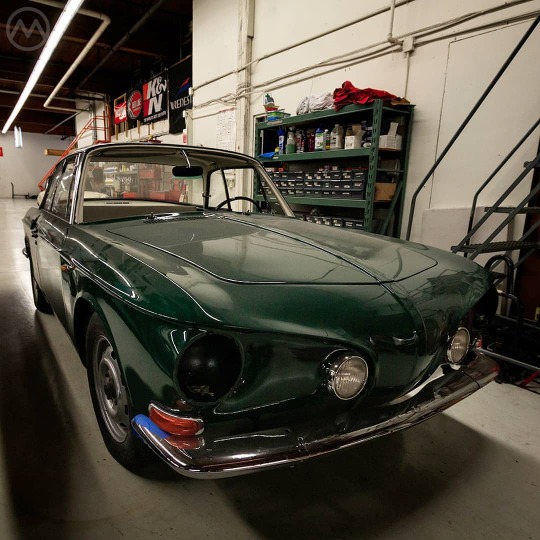
Looking back a couple of years for #frontendfriday to this #Type34KarmannGhia. The round, Chrysler-inspired regular K-G is a familiar site in the USA but the #Type34 was never sold here. A few have trickled in over the years, however, as cars were easy to import in the 1960s and many American VW fans wanted something just a little different. The same is true of the Type 3 Notchback. There were actually three different Karmann-Ghias in the 1960s, the original, the type 34, and the Brazilian type 145 “Touring Coupe,” which looked like a blend of a Frua Glas GT and Porsche 911. The most unusual one, though, was Sergio Sartorelli’s Type 34. Born in 1928, Sartorelli was always fascinated with cars and trained as an engineer at Turin Polytechnic before working for Felice Mario Boano and later Luigi Segre at Ghia. Life at Ghia was a dream come true for him, and he was soon involved in many projects, mostly for Fiat and VW but also creating custom Chryslers for Saudi Arabian Sheikhs. Two of his earliest production projects were the Fiat 500 Jolly and the Type 34, the prototype of which was done in early 1960. Underneath it was essentially a Type 3 1500, but with it’s rakish bodywork and healthy increase in speed from the regular K-G, it was a desirable car, albeit one with a high price. Only VW’s Westfalia campers cost more in the showroom. The razor-edged sides and slim, elegant greenhouse were unmistakable, and it came with many features unheard of in regular VWs, like a power sunroof. Few luxury customers were after a VW in the ‘60s, but like the other Type 3s, the 34 was an effort to move VW beyond economy vehicles. Never explicitly a “sports car,” the Type 34 was aimed at a sort of personal/luxury car market, buyers who might previously have had a Borgward Isabella Coupe or Renault Caravelle. The car's high price and lack of availability in VW's largest export market meant relatively low production; ~42,000 were made from 1962 to 1969. A complex body with lots of sculpting and many different welds, the larger Ghia proved to be a prolific ruster, and since all the panels were unique to the Der Große Karmann, repair was not an easy task. Survivors are rare now. (at Group 2 Motorsports) https://www.instagram.com/p/CK69Z9QlXfr/?igshid=ps4841zvygbw
0 notes